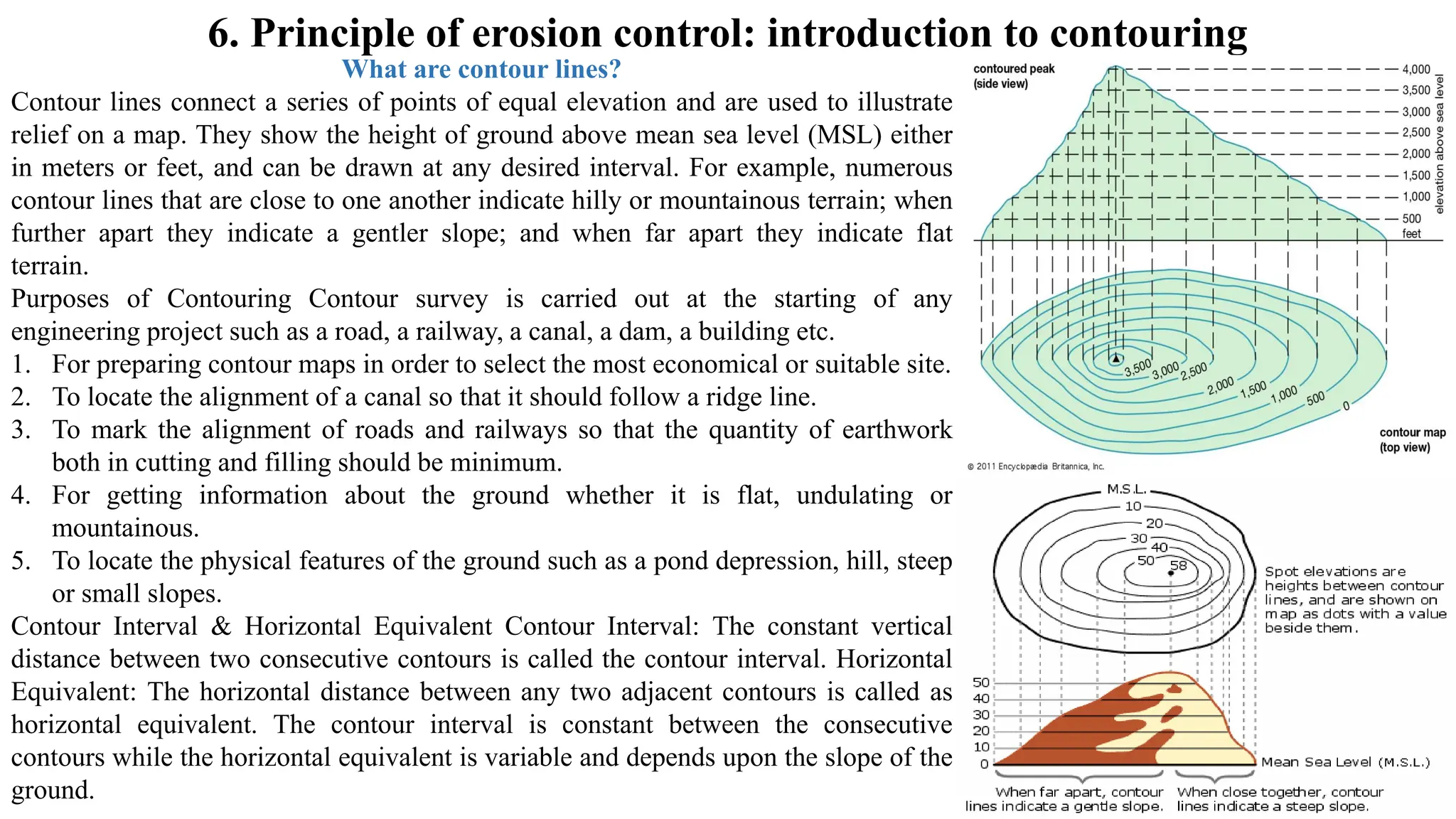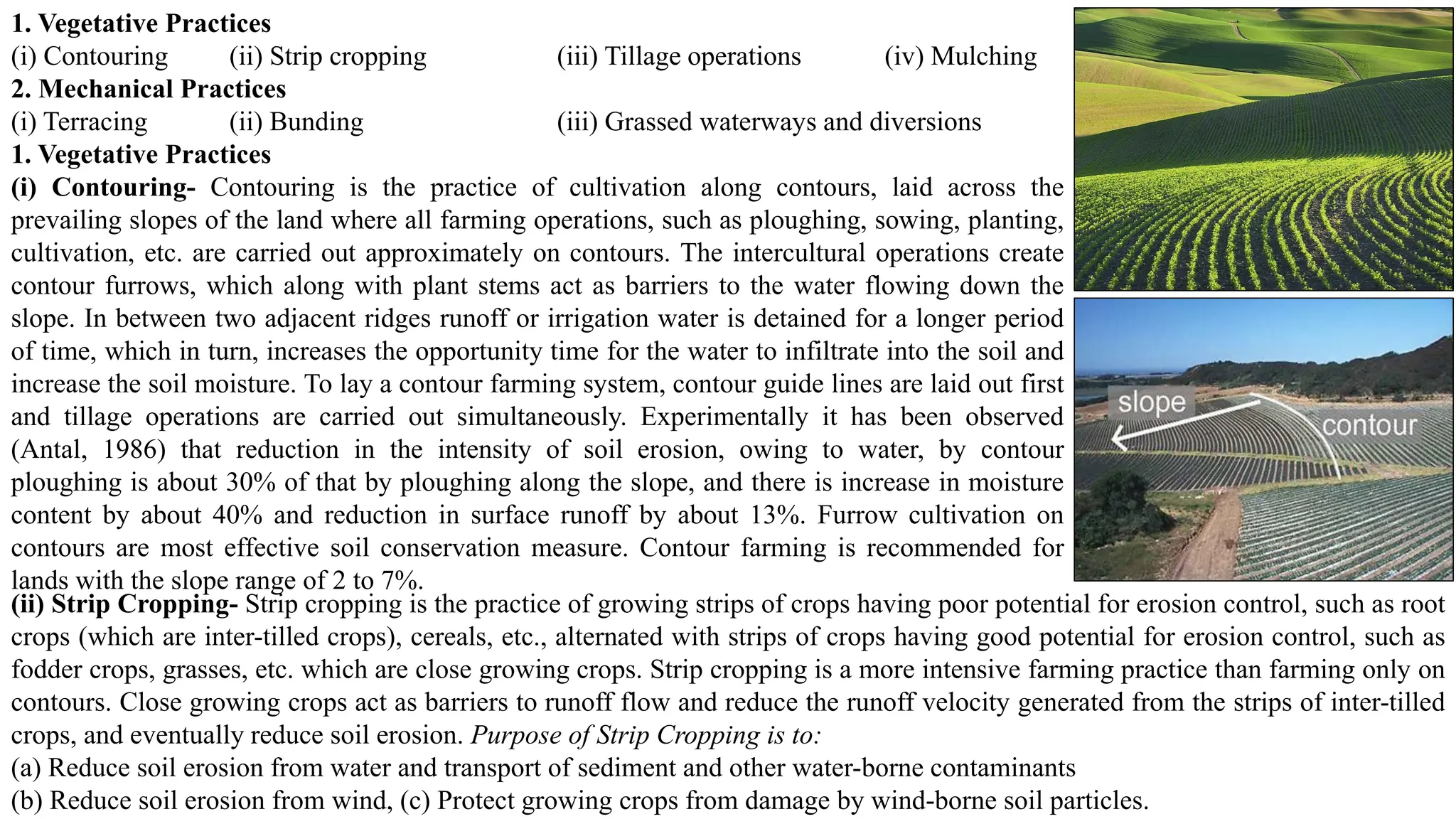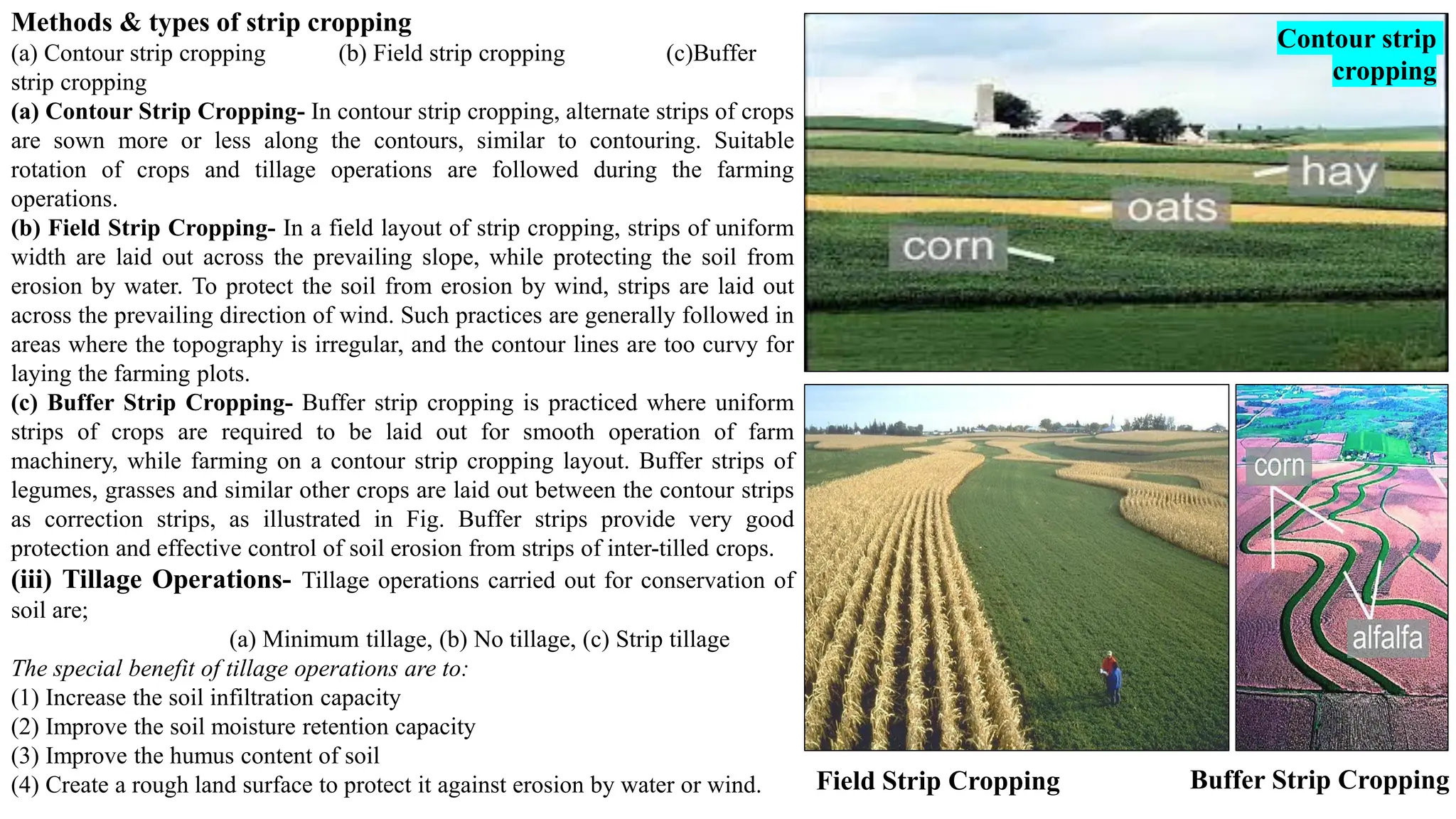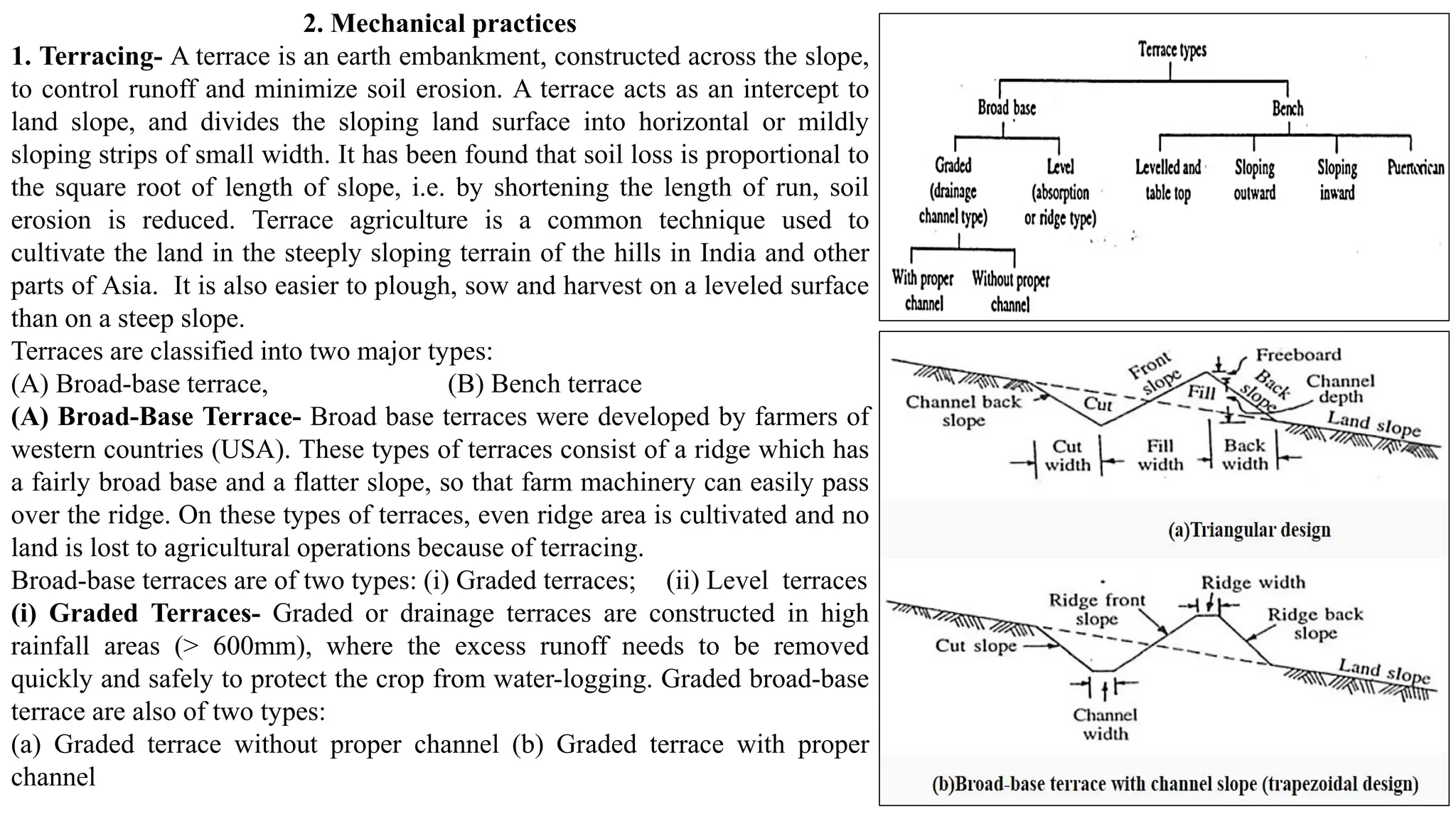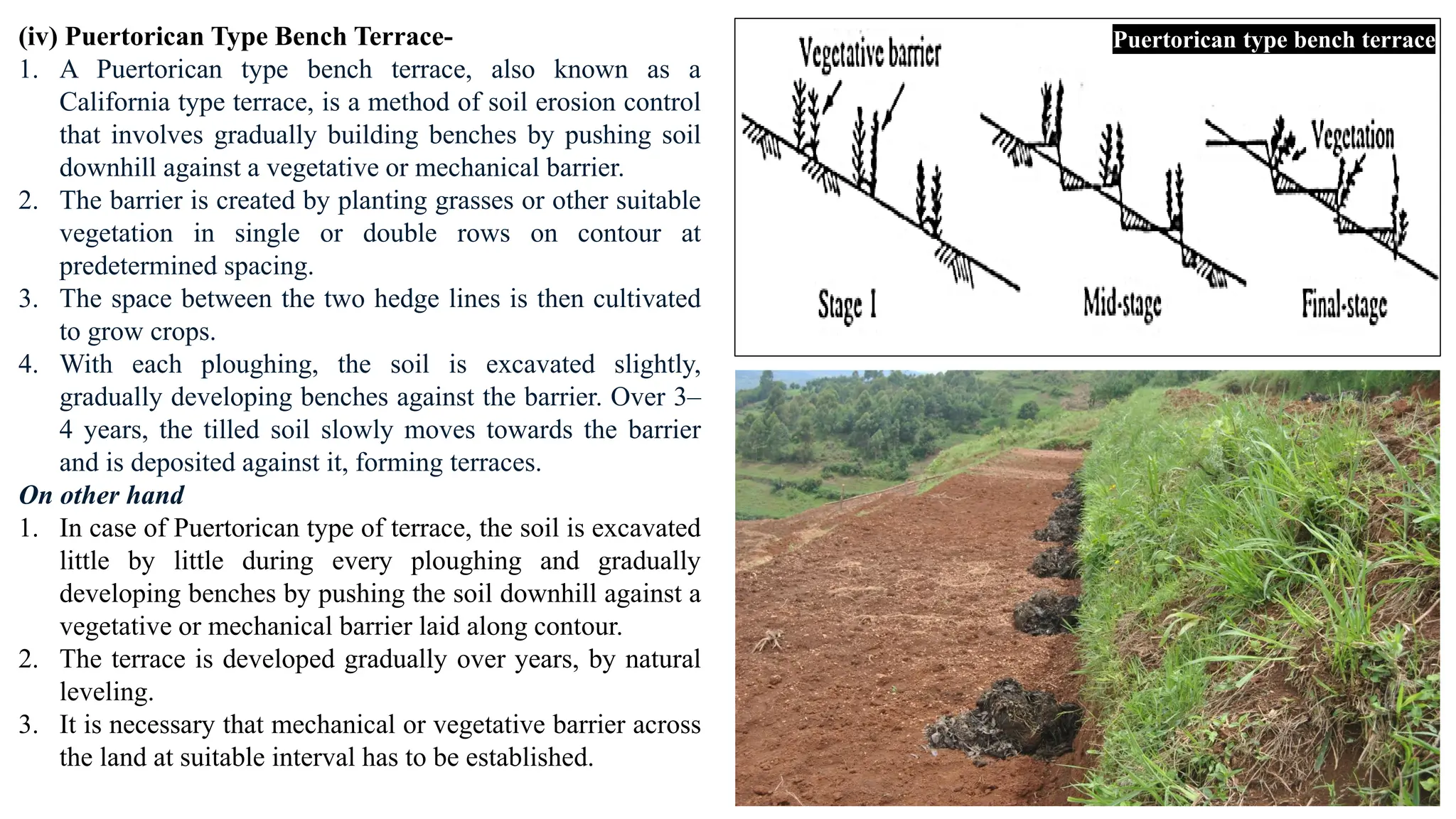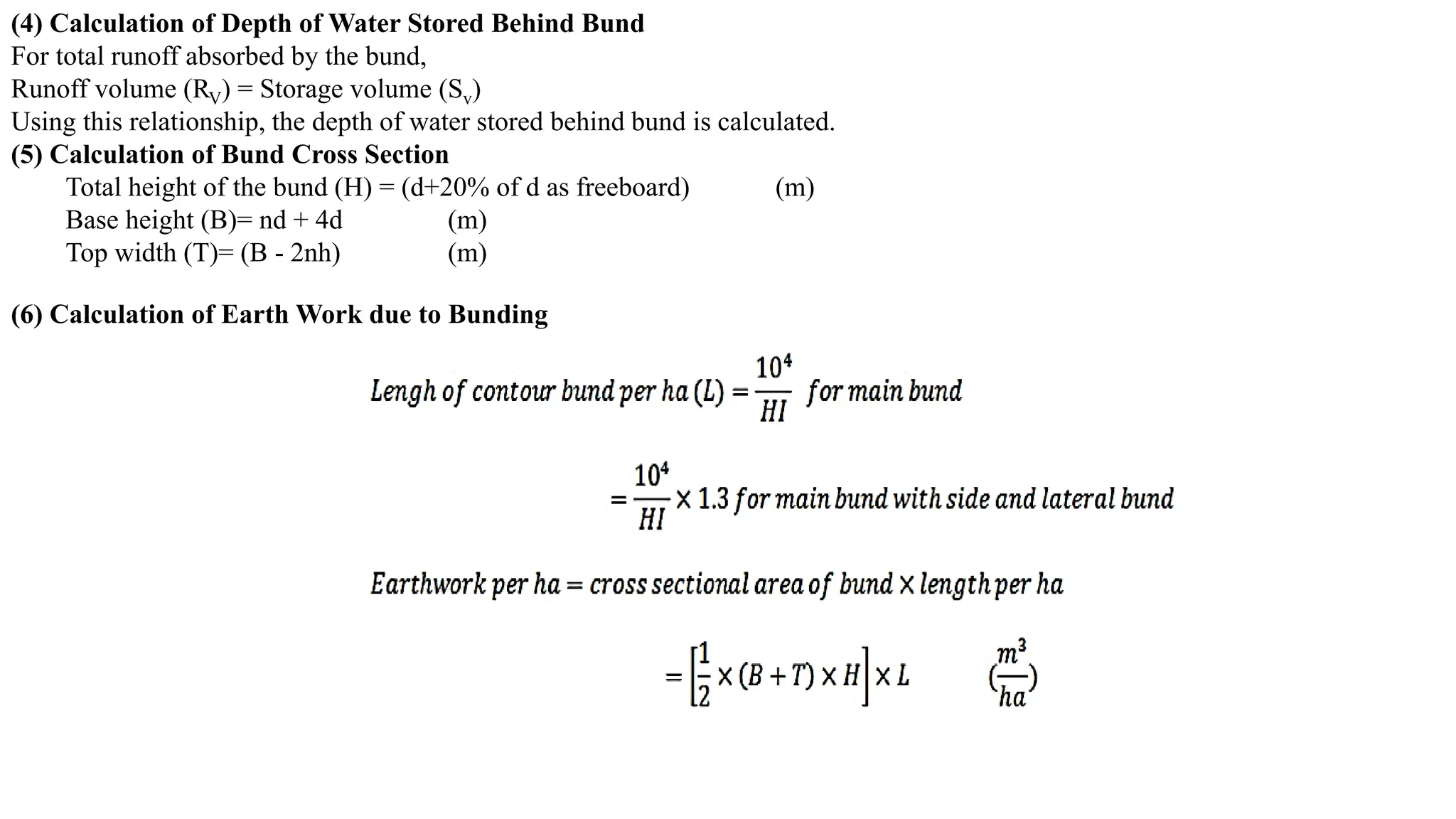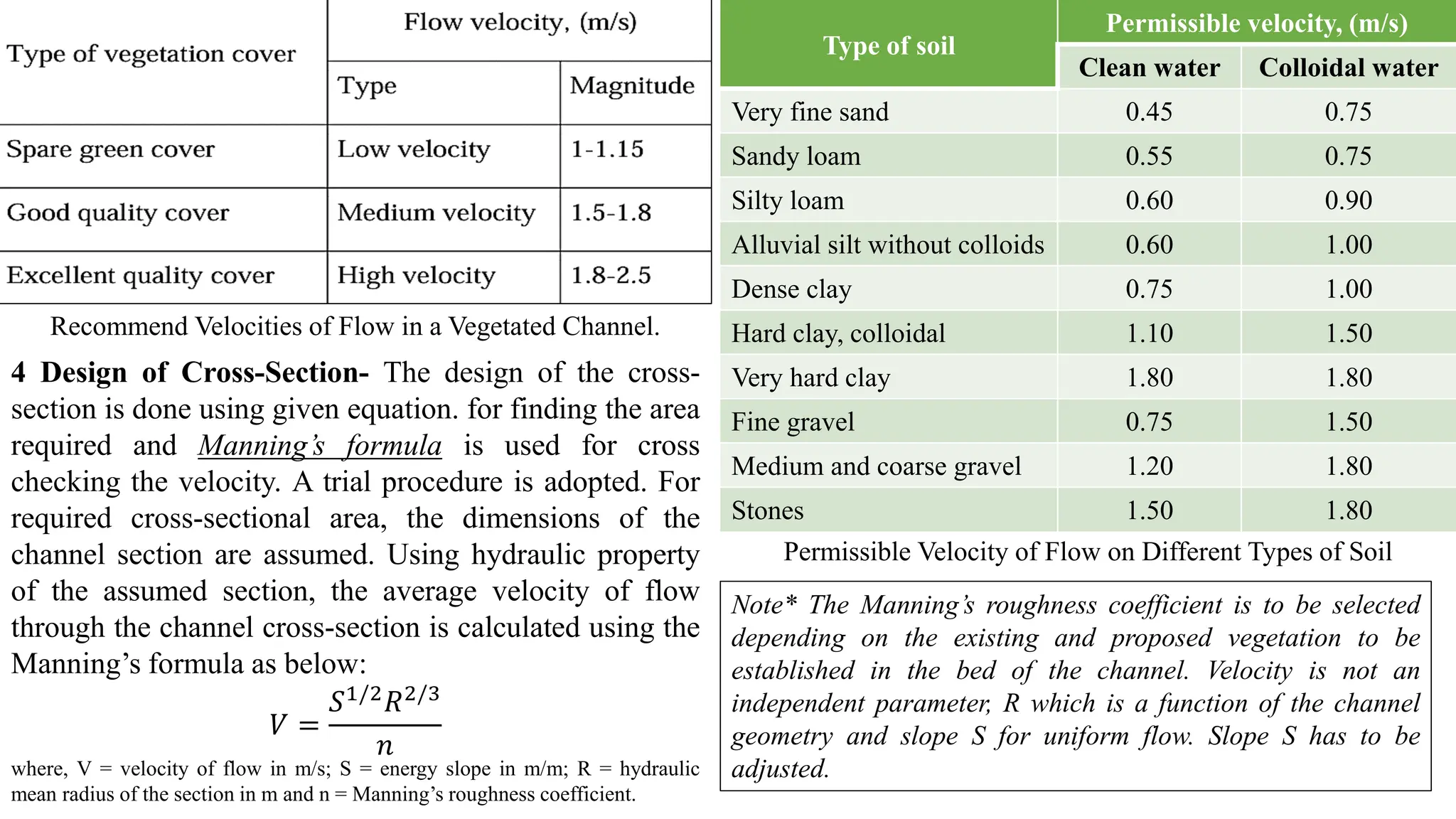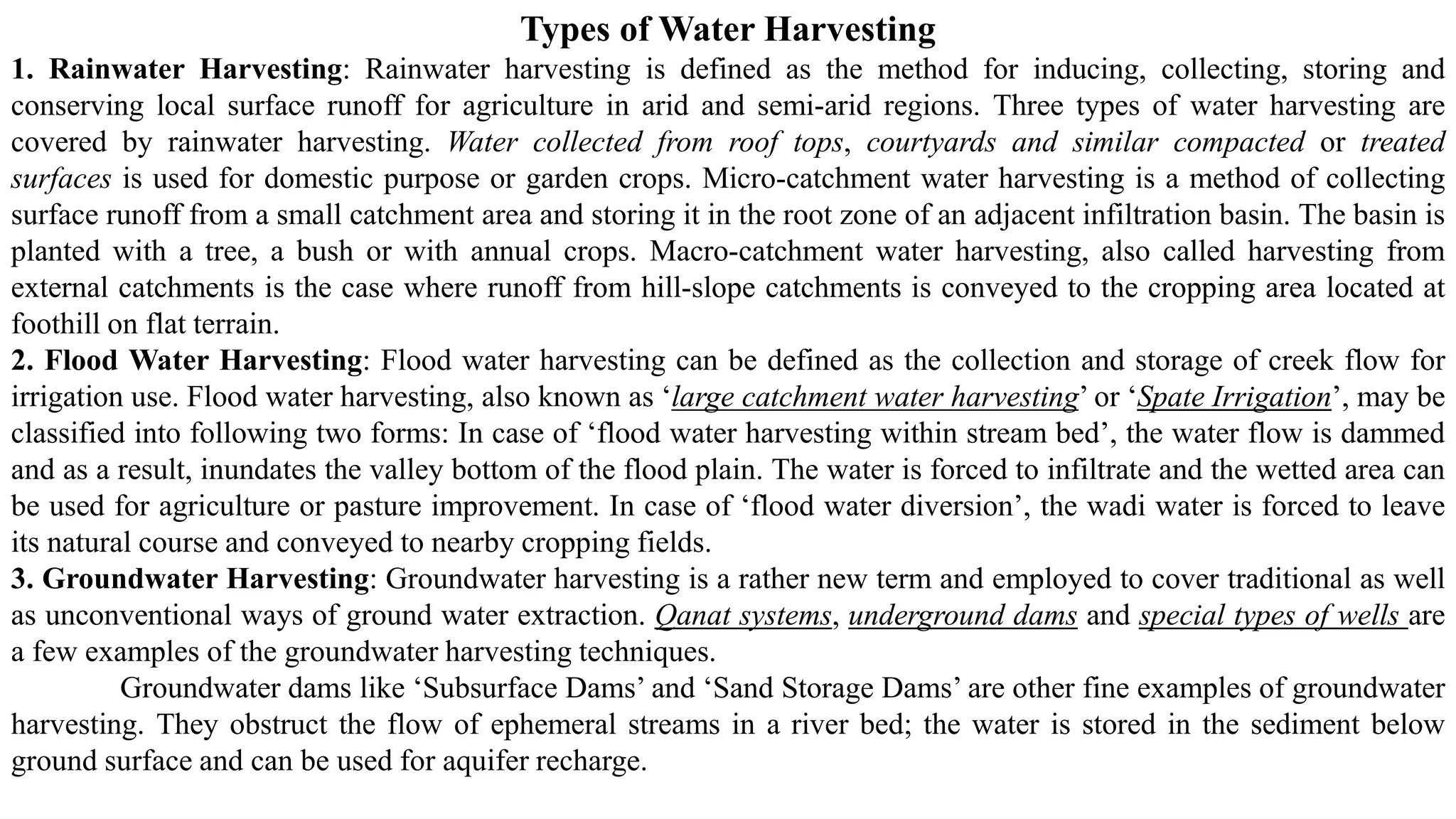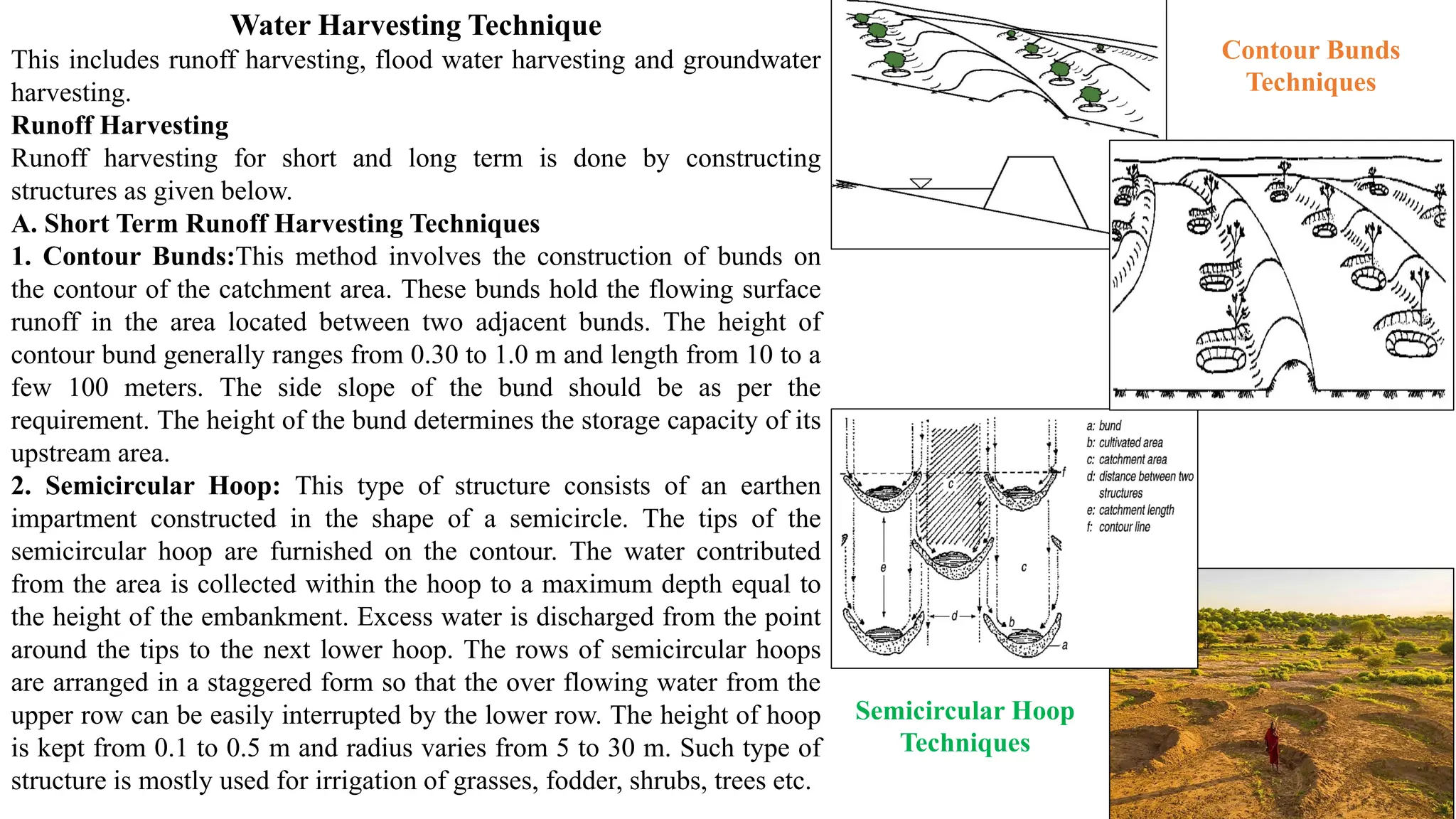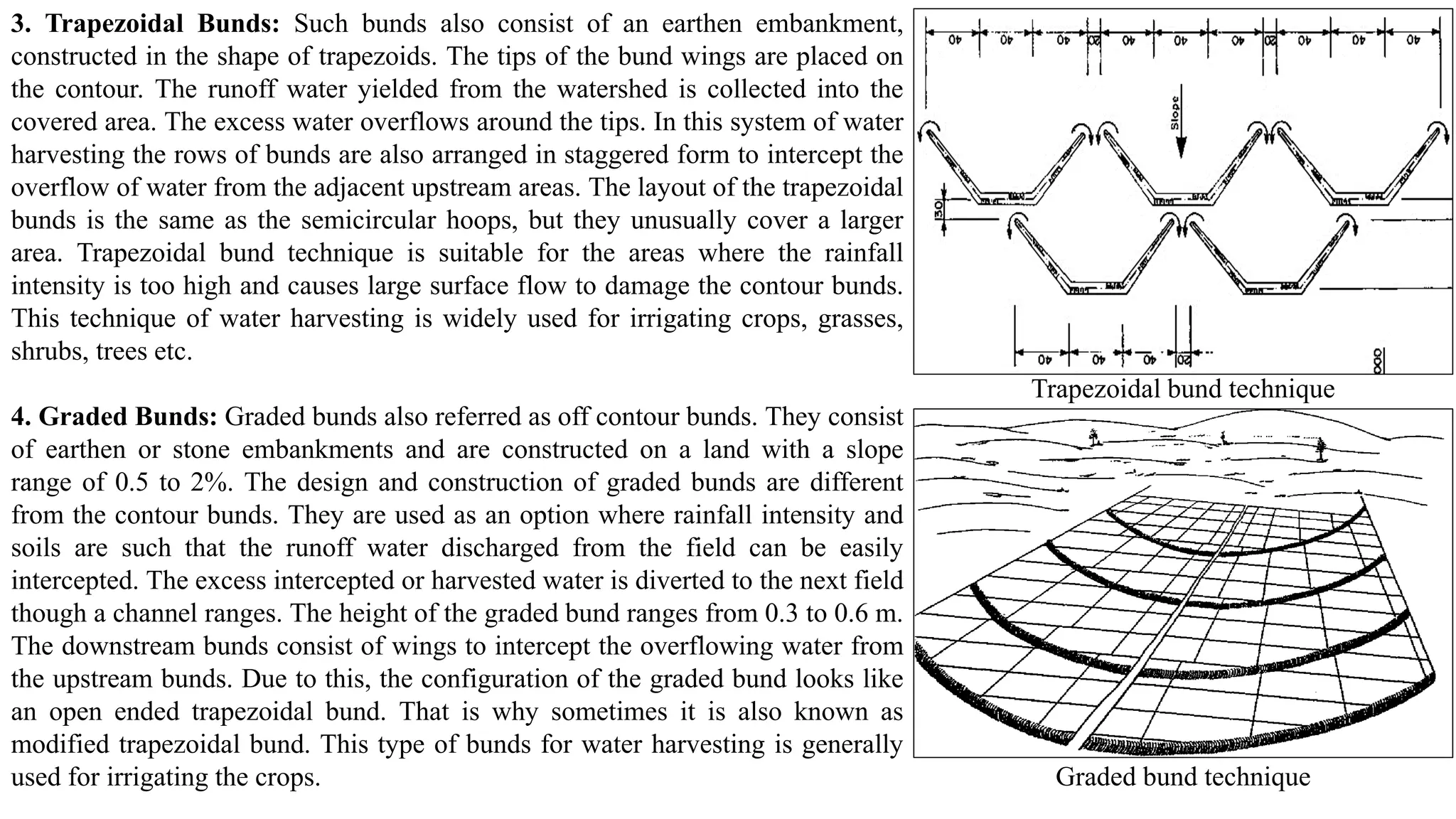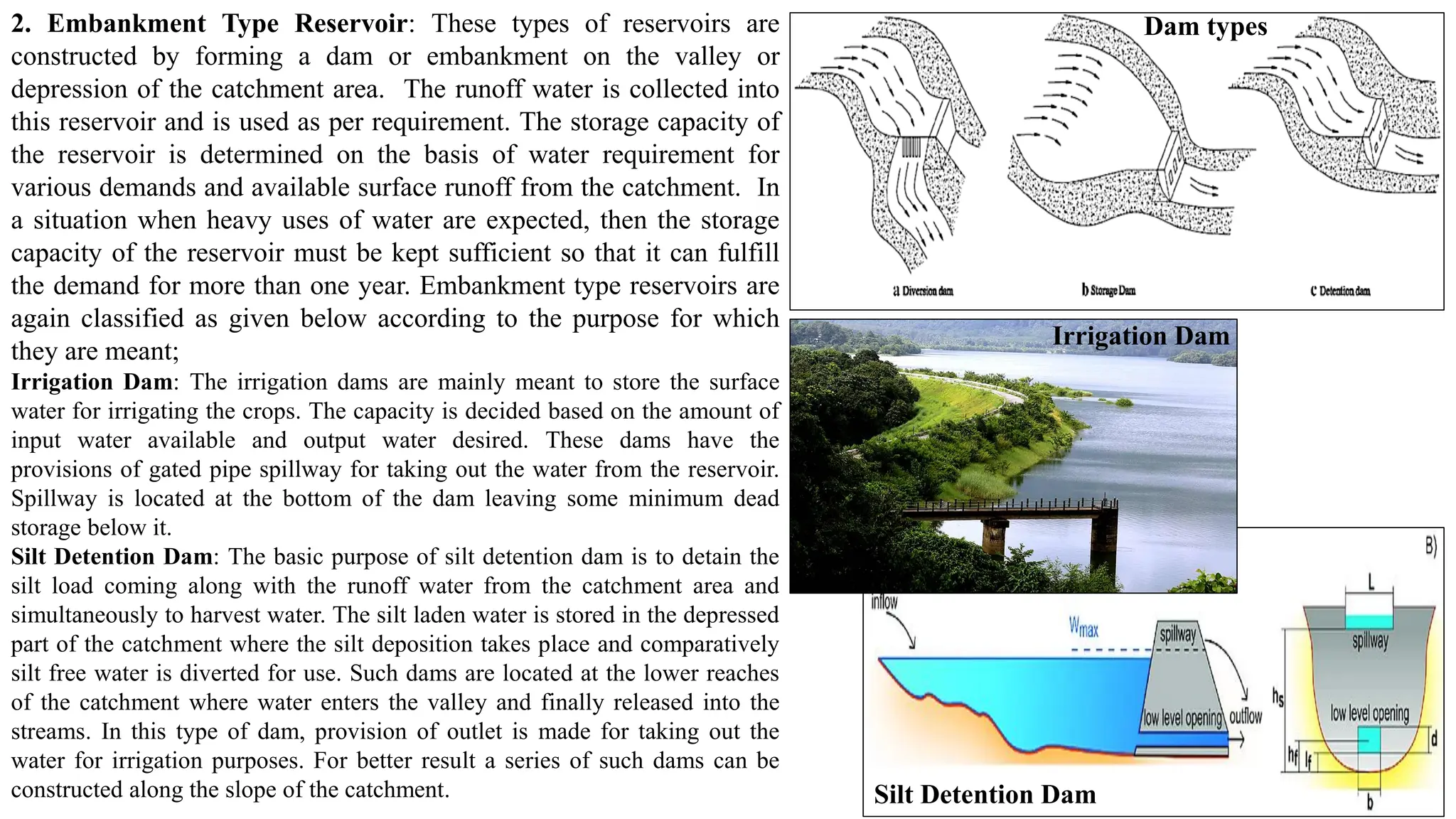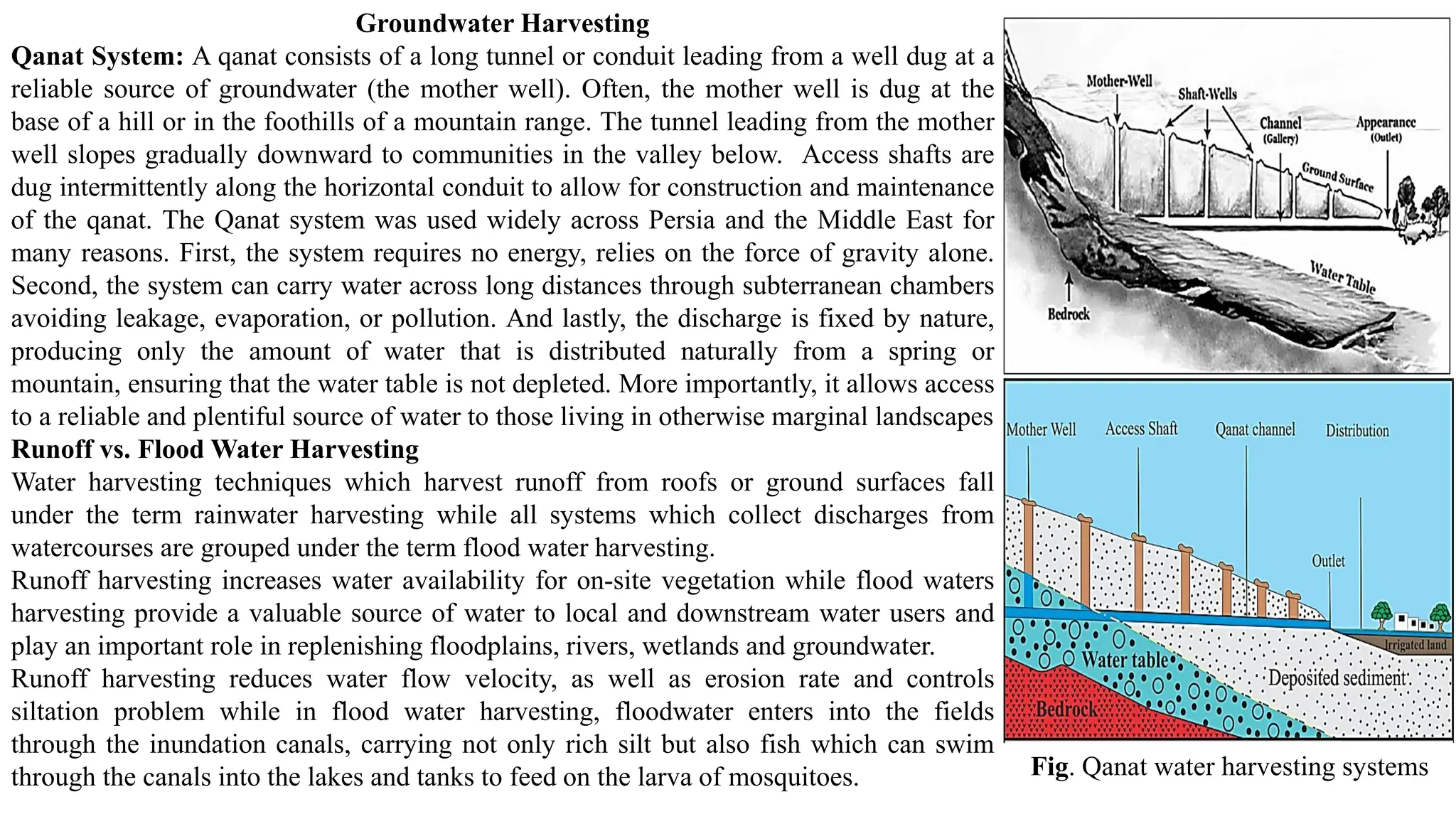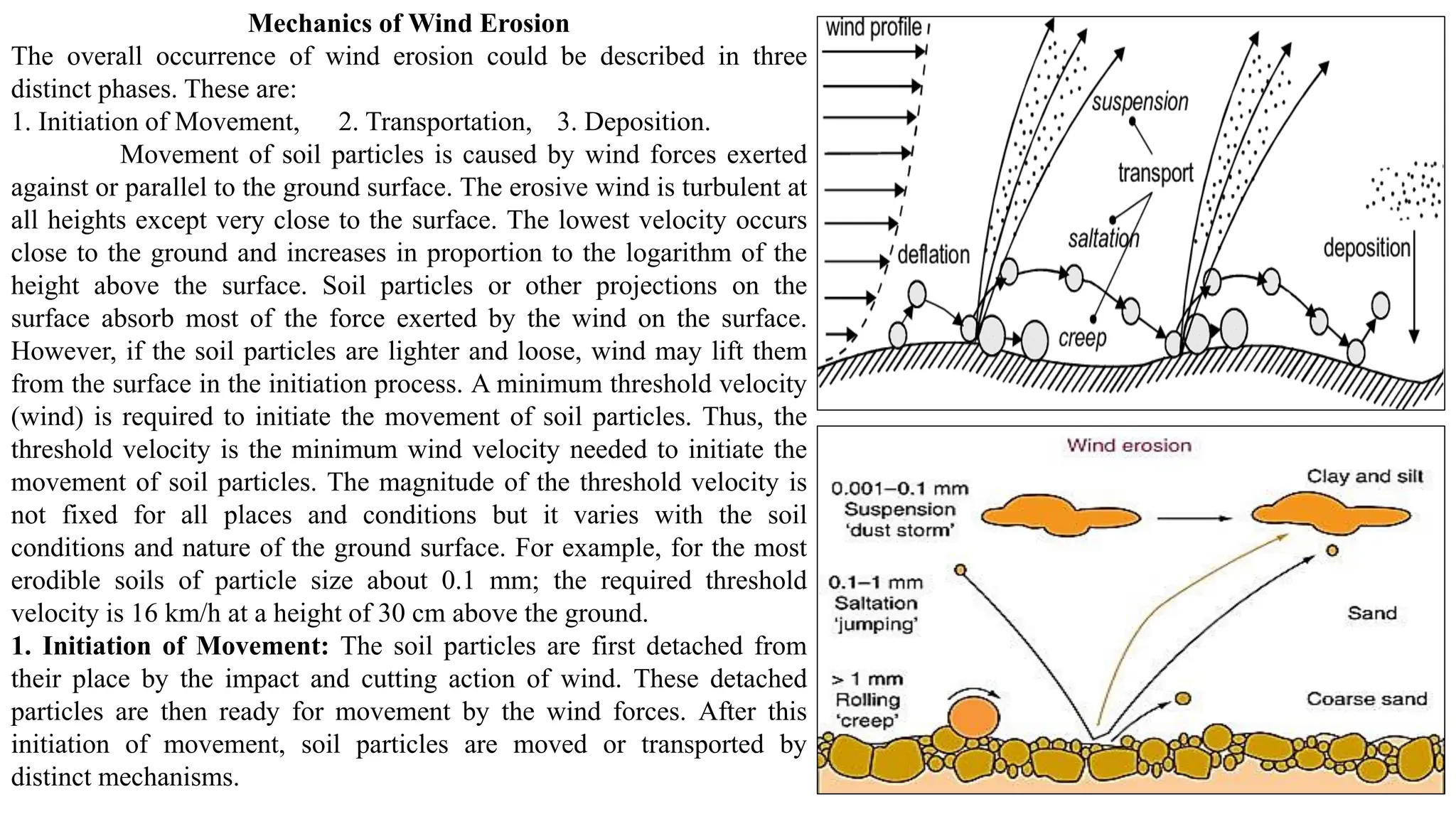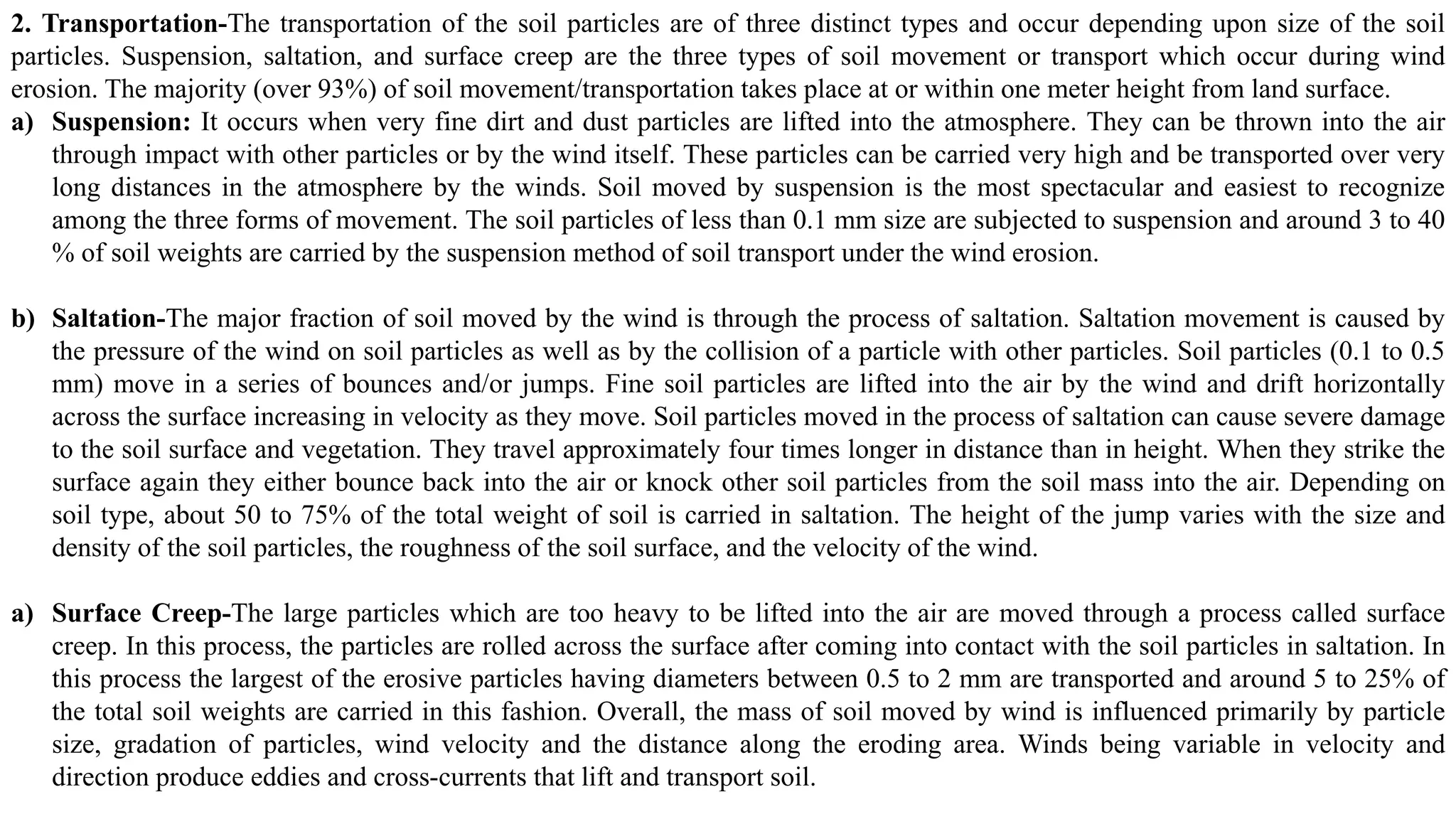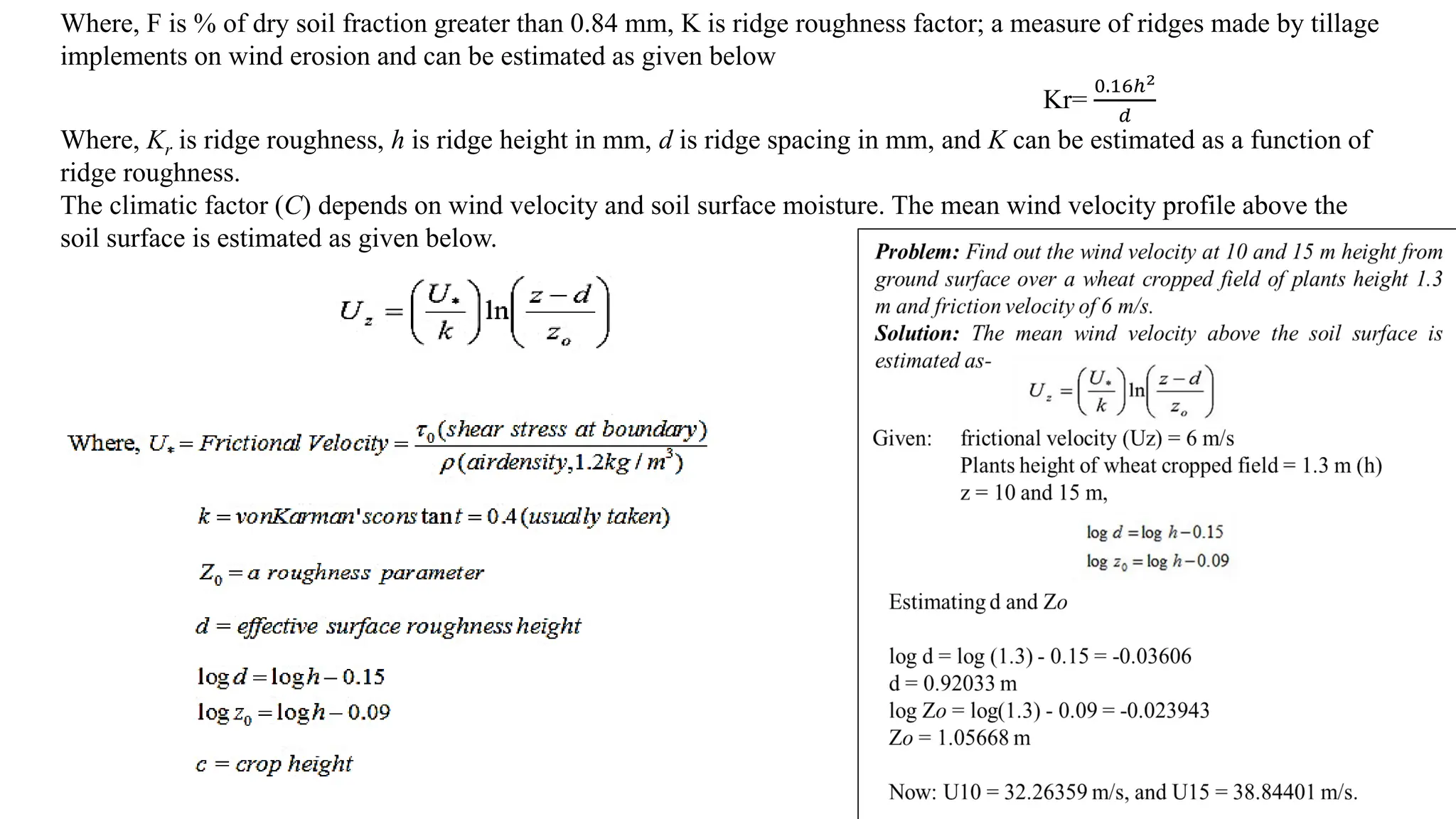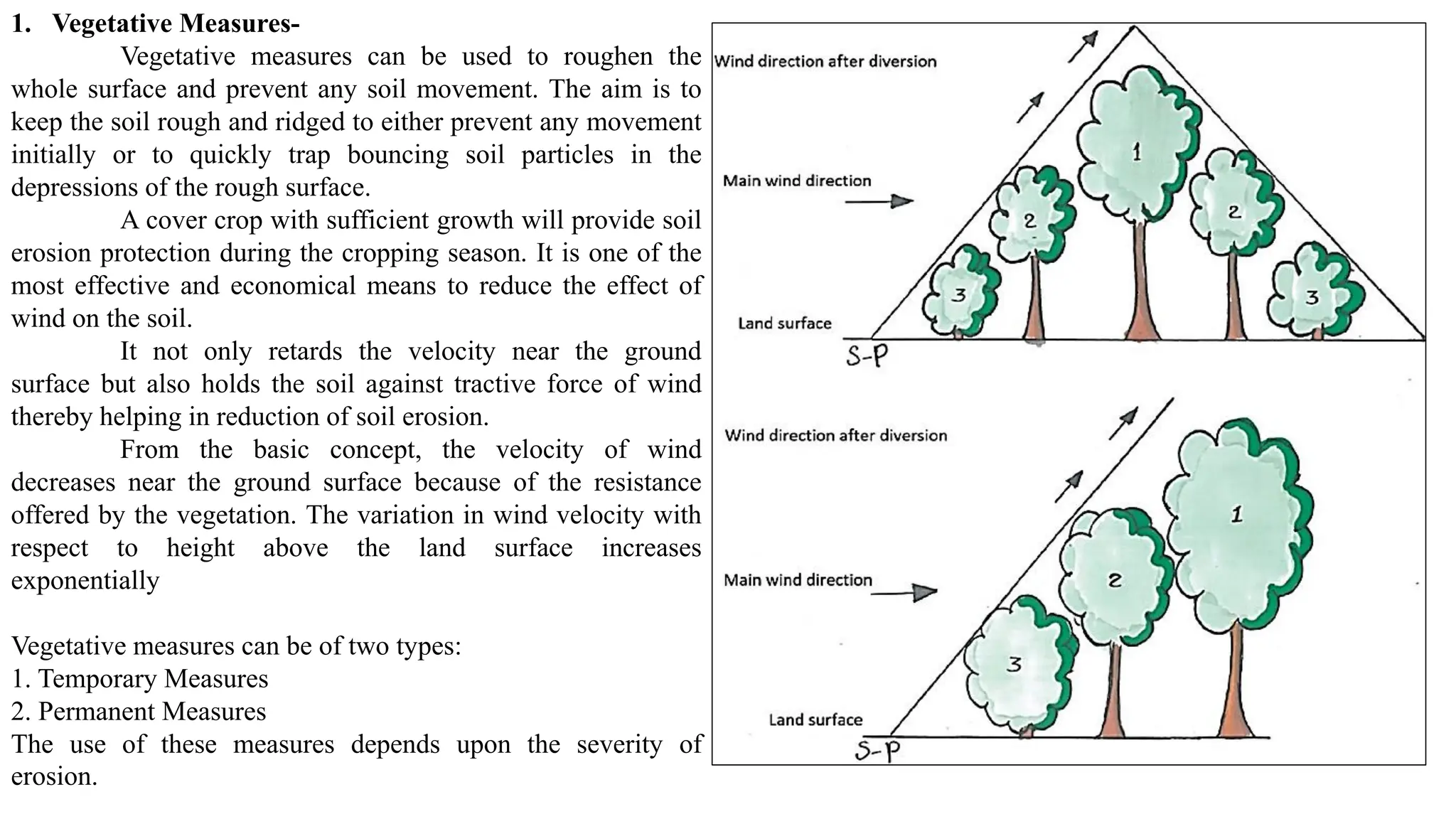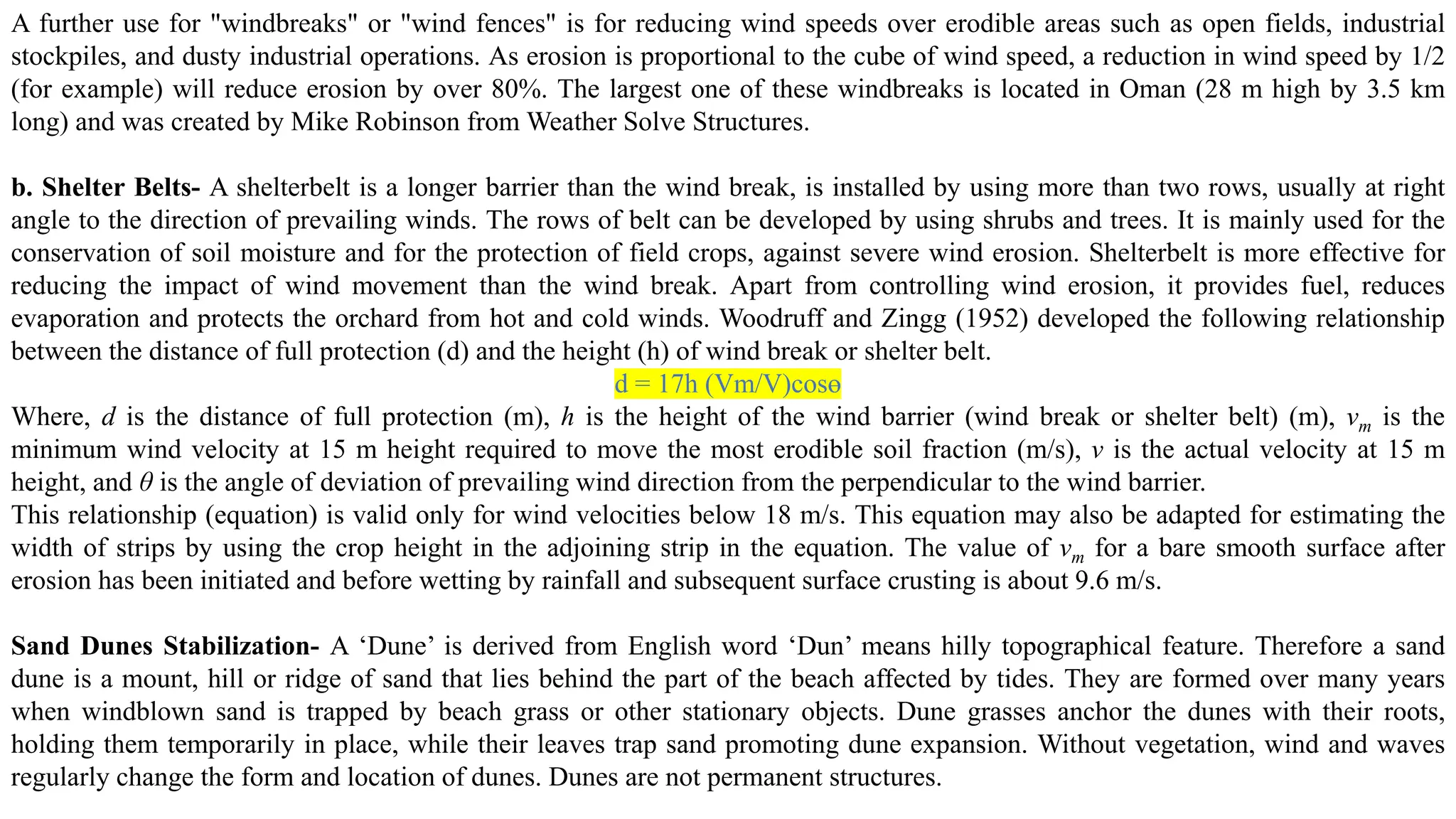This document provides an overview of soil and water conservation engineering. It discusses the status of soil conservation in India, including causes and extent of soil degradation. It outlines 10 topics that will be covered, including the universal soil loss equation, erosion control techniques, water harvesting, and wind erosion. The importance of soil conservation to protect productive lands and prevent damage from droughts and floods is emphasized. Key programs implemented in India to address soil erosion and degradation are also summarized.



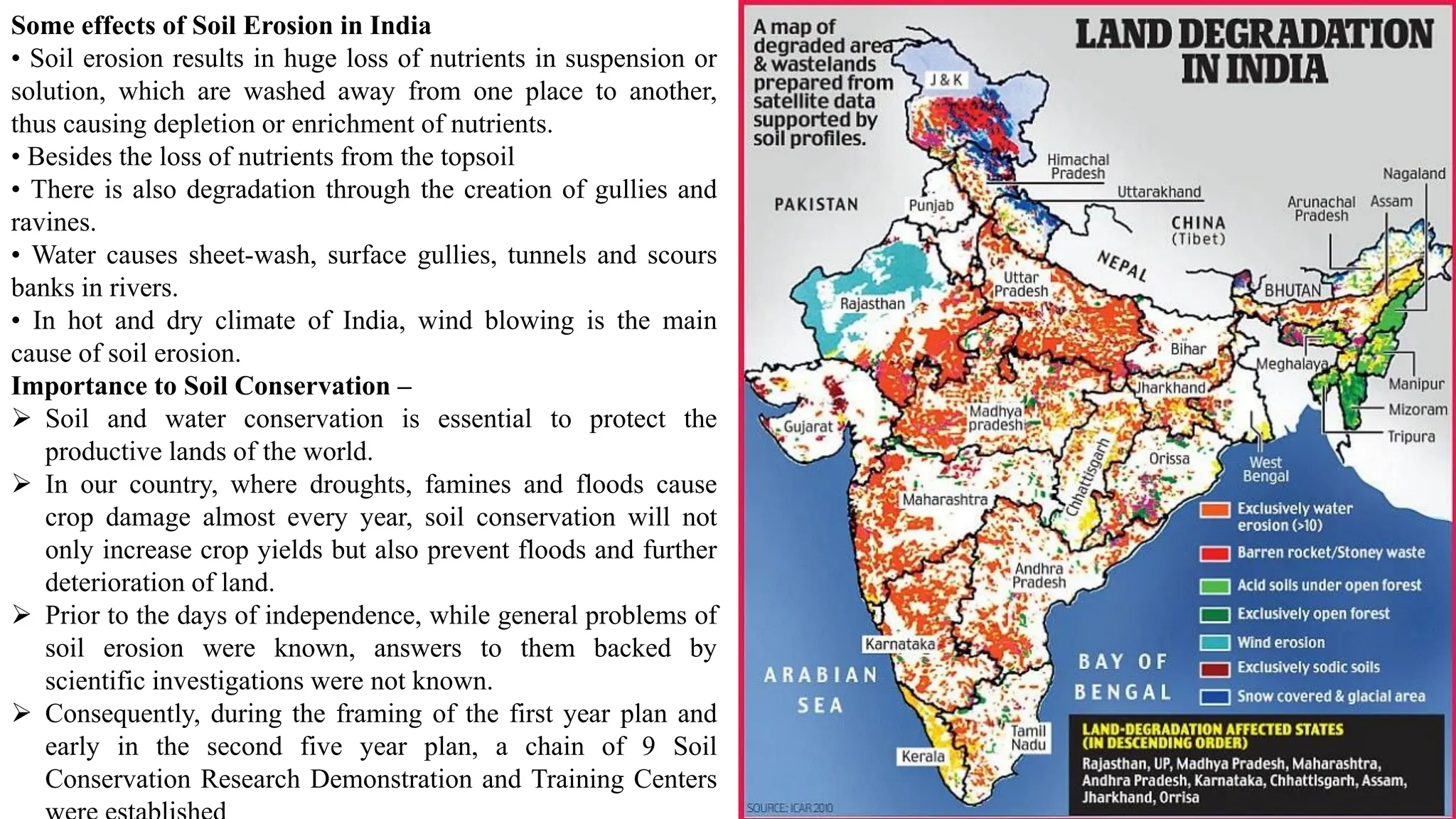

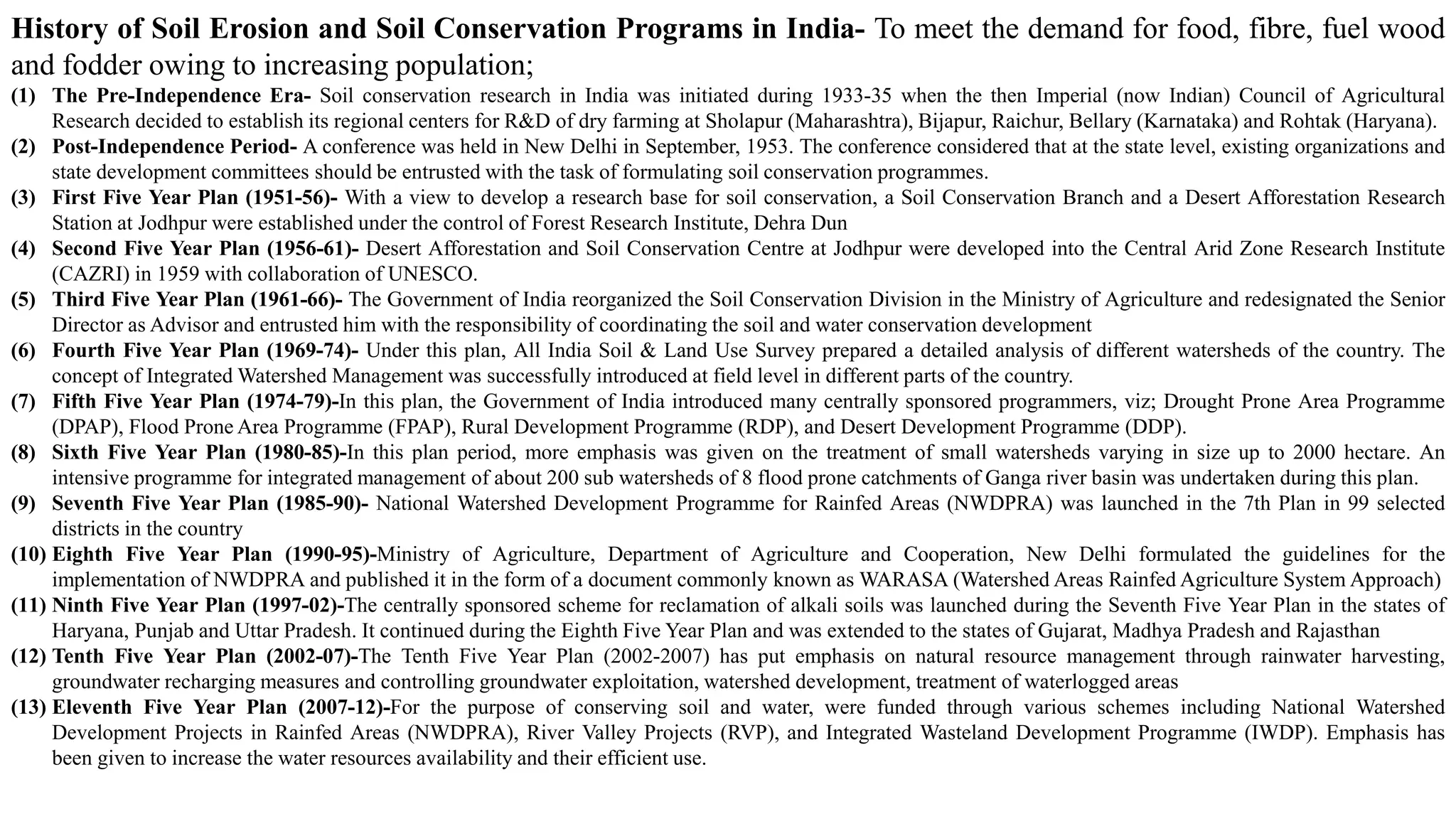



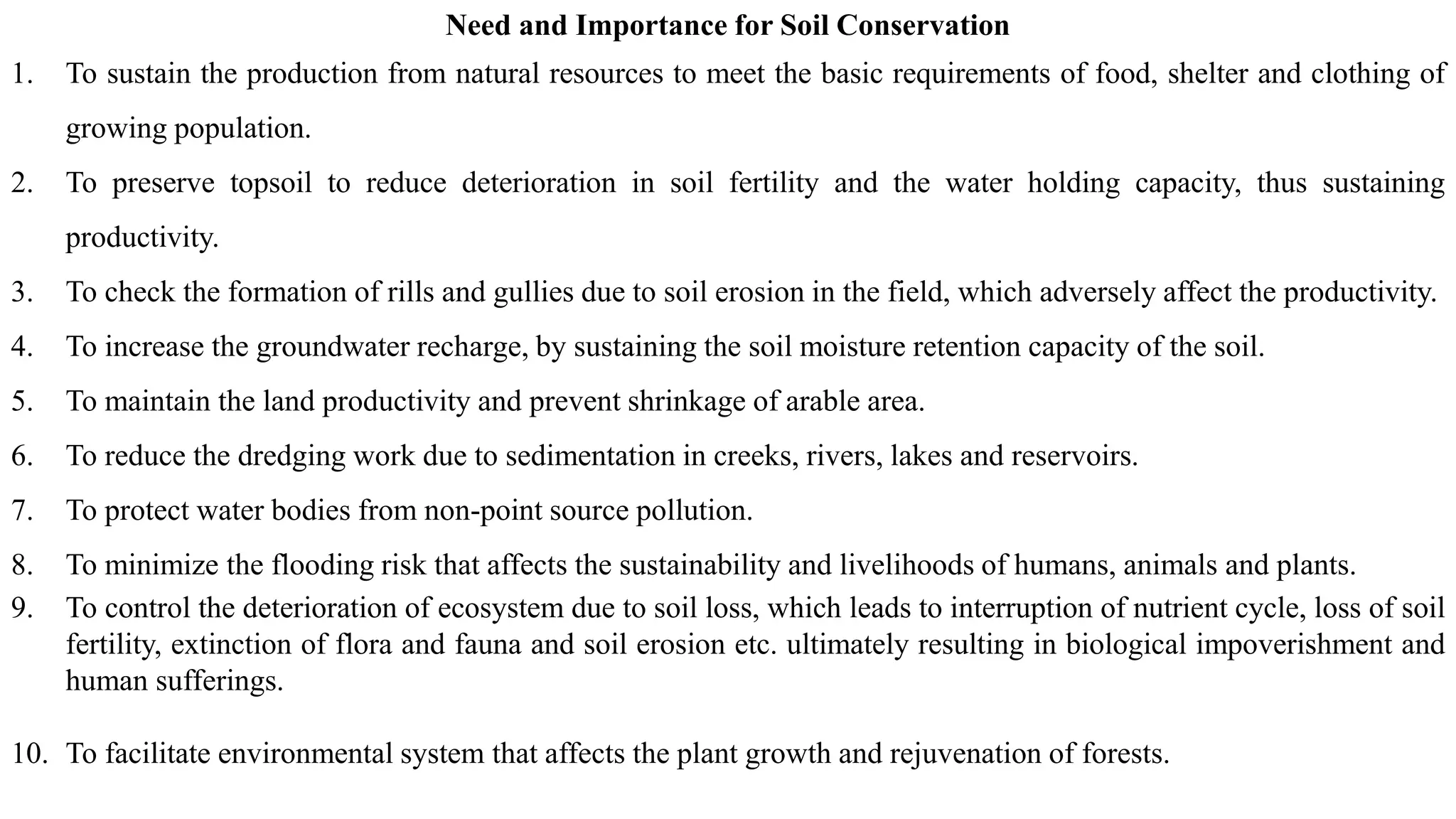




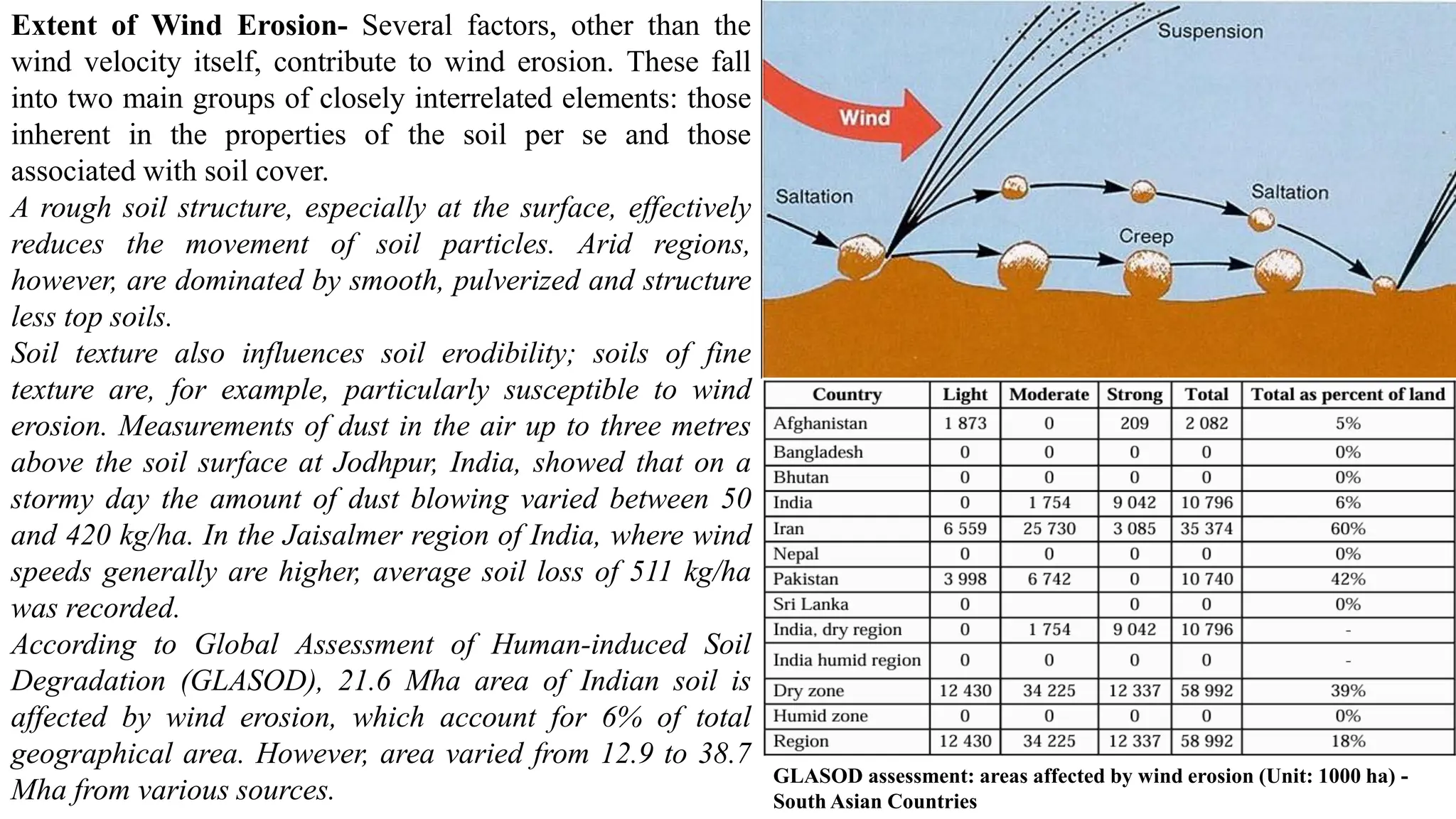





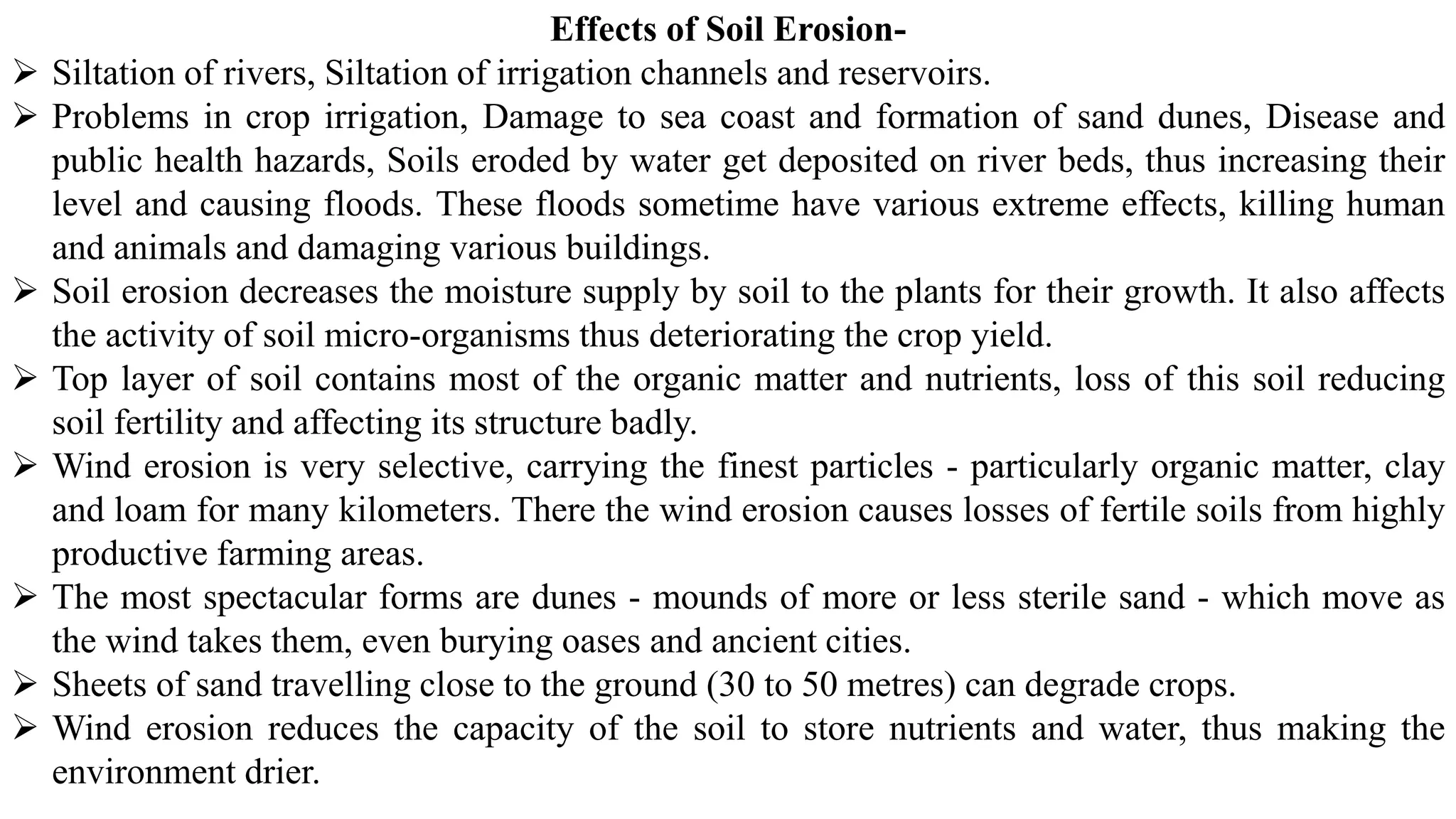






![Rainfall Erosivity Factor (R): It refers to the rainfall erosivity index, which expresses the ability of rainfall to erode the soil
particles from an unprotected field. It is a numeral value. From long term field studies, it has been observed that the extent of soil
loss from a barren field is directly proportional to the product of two rainfall characteristics: 1) kinetic energy of the storm; and 2)
its 30- minute maximum intensity. The following equation is used for calculation of R-factor,
𝑅 = [
1
100
210.3 + 89𝑙𝑜𝑔𝐼𝑖 ℎ𝑖]𝐼𝑚𝑎𝑥30
Where, Ii = Intensity of rain in a given period (cm/h)
Hi =Amount of precipitation in that period (cm)
𝐼𝑚𝑎𝑥30 = Maximum intensity during a 30 minutes period (cm/h)
Soil Erodibility Factor (K): This factor is related to the various soil properties, by virtue of which a particular soil becomes
susceptible to get erode, either by water or wind. In general, the soil properties such as the soil permeability, infiltration rate, soil
texture, size & stability of soil structure, organic content and soil depth, affect the soil loss in large extent. It can be calculated by;
K = 2.8 * 10-7 M1.14 (12-a) + 4.3 * 10-3 (b-2) + 3.3*10-3 (c-3)
M = Particle size parameter (% silt + % very fine sand) (100-% clay)
a = % organic matter
b = Soil structure code (very fine granular,1; medium or coarse granular,3; blocky, platy or massive, 4),
C = Profile permeability class (rapid, 1; moderate rapid, 2; moderate, 3; slow to moderate 4; slow, 5; very slow, 6).
Slope Length and Steepness Factor (LS): The LS factor represents the erosive potential of a particular soil with specified slope
length and slope steepness. This factor basically affects the transportation of the detached particles due to surface flow of
rainwater, either that is the overland flow or surface runoff. The capability of runoff/overland flow to detach and transport the soil
materials gets increased rapidly with increase in flow velocity. On steep ground surface the runoff gets increase because of
increase in runoff rate. The factors- L and –S are described as under:
𝐿 =
[𝐿𝑝]𝑚
22.13](https://image.slidesharecdn.com/swe1st1-240417042444-29ea22dc/75/Basics-of-Soil-and-water-conservation-engineering-28-2048.jpg)




